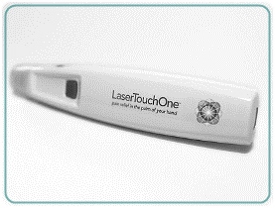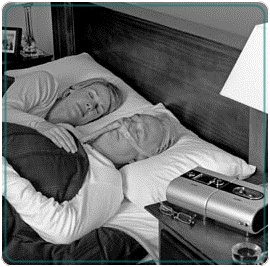
Your dependency on supplemental oxygen doesn't need to prevent you from traveling and enjoying your life! In 2009, the U.S. Department of Transportation issued a final rule requiring all commercial airlines to accept patients traveling with portable oxygen concentrators (POCs). Traveling successfully with a POC begins during the planning stages of your trip. Please refer to the following helpful tips for oxygen users traveling by airplane:
- Before you make travel plans, check with your doctor to determine what extra precautions must be taken.
- Contact your home care provider several weeks before you plan to travel to make arrangements concerning oxygen supplies and equipment for you while traveling and at your destination.
- Be prepared to make several contacts with your travel agent and/or the airline. Each airline has specific rules and regulations. Some airlines may require specific forms of notification of oxygen service to be submitted to them prior to travel. In most cases, your physician will need to fill out and sign the forms.
- Request an aisle seat for ease of movement and for allowing more room to change your POC battery.
- Notify the airline of any other special needs prior to traveling. These needs may include wheelchairs, motorized cart, etc.
- Reconfirm your travel plans with the airline at least 72 hours in advance.
- Arrive at the airport well in advance to allow ample time for check-in and security. Going through security takes time as both the POC and extra battery will have to be checked and scanned.
- Take advantage of the option to pre-board.
- Stay charged up! When using a POC, estimate the battery discharge rate for the flight time and multiply that by at least 2 to accommodate flight delays and increased power utilization.
For more helpful airline travel tips, please
click here to read Up, Up, and Away published in the May 2009 American Association of Respiratory Care Times.


Do you suffer from chronic pain? Joint pain? Back pain? With the LaserTouchOne you no longer have to.
The LaserTouchOne is designed to treat the source of pain, not mask or block its symptoms. As a result, it can be safer and more effective than habit-forming pain medications. A clinical study demonstrated that the LaserTouchOne is over 93% effective in decreasing pain in participants who receive the full treatment regimen.
Typically, the treatment of pain is done by immobilizing and using heavy medications for numbing the body to the sensation of pain. Stimulating the damaged cells in the body to promote re-growth and healing is frequently ignored. Unlike pain medications, the LaserTouchOne stimulates cells in the soft tissue to facilitate the repair and healing of that tissue at the cellular level!
Call Pro2 at 716.667.9600 or
visit our website for more information or to schedule a free demonstration of this exciting new product.


The benefits of using CPAP therapy to treat obstructive sleep apnea (OSA) have been proven: lessening or elimination of snoring; restoring restful sleep; lowering the risk for high blood pressure, heart disease, heart attack, and stroke; and an improvement in overall quality of life.
But there may be one other benefit that is just coming to light: reduced sensitivity to pain.
In a study recently released, patients with severe OSA underwent a training session to see what their sensitivity to a radiant heat stimulus was. The next night, these patients were titrated on CPAP therapy. After six to eight weeks of using CPAP therapy, the patients returned to the laboratory to be tested again for sensitivity to the radiant heat stimulus.
Finally, the patients in the study were asked to stop using their CPAP for two nights and then return to the laboratory. The sensitivity testing was performed again. All of the sensitivity testing was compared and what the researchers found was that sensitivity to pain was reduced while on CPAP therapy, whether just for one night or for the consecutive 6-8 weeks of therapy.
You can read the
entire study here.


With the holiday season upon us and 2013 quickly approaching, we want to take this opportunity to address an important insurance issue that a new calendar year always brings. Whether you have an individual or employer-sponsored Health Insurance plan, there are certain things to keep in mind as we close out 2012 and usher in 2013.
There are many qualifications and limitations regarding what health insurance covers and to what extent. Certain requirements must be satisfied by the insured before the insurance company will begin paying benefits. A
deductible is a fixed dollar amount that the policy holder must pay out-of-pocket for eligible services before the insurance company will make payment for covered medical expenses. For example, if your policy has a $500 deductible, you are responsible to pay $500 worth of healthcare expenses before your insurance will start paying out.
For most policies, the medical plan's deductible is based on a calendar year regardless of when your coverage became effective. All calendar year deductibles will therefore be renewed on
January 1, 2013. If you are unsure about your policy, please contact your insurance carrier for more information.
It's always a good idea to keep yourself as informed as possible when it comes to your insurance policy. It's just as important to keep our office up-to-date on any changes that may take place. Many insurance policies renew, change, or terminate at the end of the year. This could mean changes in your financial responsibility.

Are you on the lookout for clean air?
If you're like most Americans, the air you breathe probably isn't something you give much thought to.
The American Lung Association released
some interesting statistics based on their
2012 State of the Air report:
- Almost half of all Americans (41%) live in counties that have unhealthy levels of ozone or particle pollution
- Over 6 million people live in areas with unhealthy levels of year-round particle pollution
- One in six people live in areas with unhealthy levels of short-term particle pollution
What does this mean to you? Well, if you live in one of the affected areas, you may have experienced times when it was difficult to breathe. And if you suffer from asthma or COPD, breathing can be difficult enough without added pollutants.
Is there anything that can be done to help improve these statistics?
The American Lung Association recommends:
- Driving less: take advantage of public transportation, bike, or walk places since vehicle emissions account for a large part of air pollution
- Use less electricity: use energy efficient appliances and turn lights off when leaving the room since generating electricity is one of the biggest sources of air pollution
- Don't burn wood/trash: dispose of waste properly since burning releases many particles into the air; if you want to have a fire, use natural gas which has far fewer pollutants
- Send a message to local representatives: let your Congressmen, Assemblymen, Senators, Governors, and Mayors know that you support the Clean Air Act and want healthier, cleaner air to breathe
You can
download the 2012 State of the Air report here to read their full findings.

 Your dependency on supplemental oxygen doesn't need to prevent you from traveling and enjoying your life! In 2009, the U.S. Department of Transportation issued a final rule requiring all commercial airlines to accept patients traveling with portable oxygen concentrators (POCs). Traveling successfully with a POC begins during the planning stages of your trip. Please refer to the following helpful tips for oxygen users traveling by airplane:
Your dependency on supplemental oxygen doesn't need to prevent you from traveling and enjoying your life! In 2009, the U.S. Department of Transportation issued a final rule requiring all commercial airlines to accept patients traveling with portable oxygen concentrators (POCs). Traveling successfully with a POC begins during the planning stages of your trip. Please refer to the following helpful tips for oxygen users traveling by airplane:
 Do you suffer from chronic pain? Joint pain? Back pain? With the LaserTouchOne you no longer have to.
Do you suffer from chronic pain? Joint pain? Back pain? With the LaserTouchOne you no longer have to.
 With the holiday season upon us and 2013 quickly approaching, we want to take this opportunity to address an important insurance issue that a new calendar year always brings. Whether you have an individual or employer-sponsored Health Insurance plan, there are certain things to keep in mind as we close out 2012 and usher in 2013.
With the holiday season upon us and 2013 quickly approaching, we want to take this opportunity to address an important insurance issue that a new calendar year always brings. Whether you have an individual or employer-sponsored Health Insurance plan, there are certain things to keep in mind as we close out 2012 and usher in 2013.